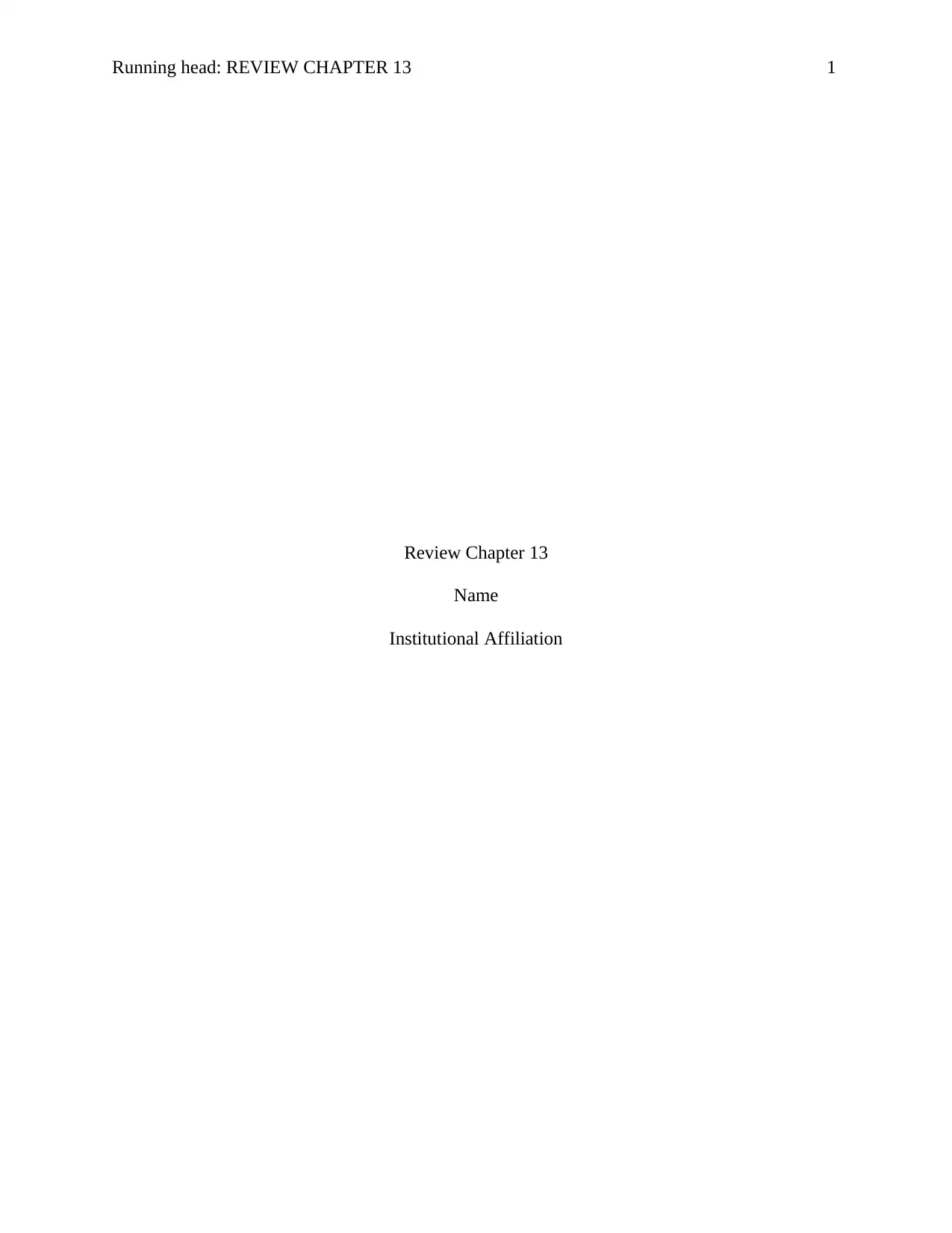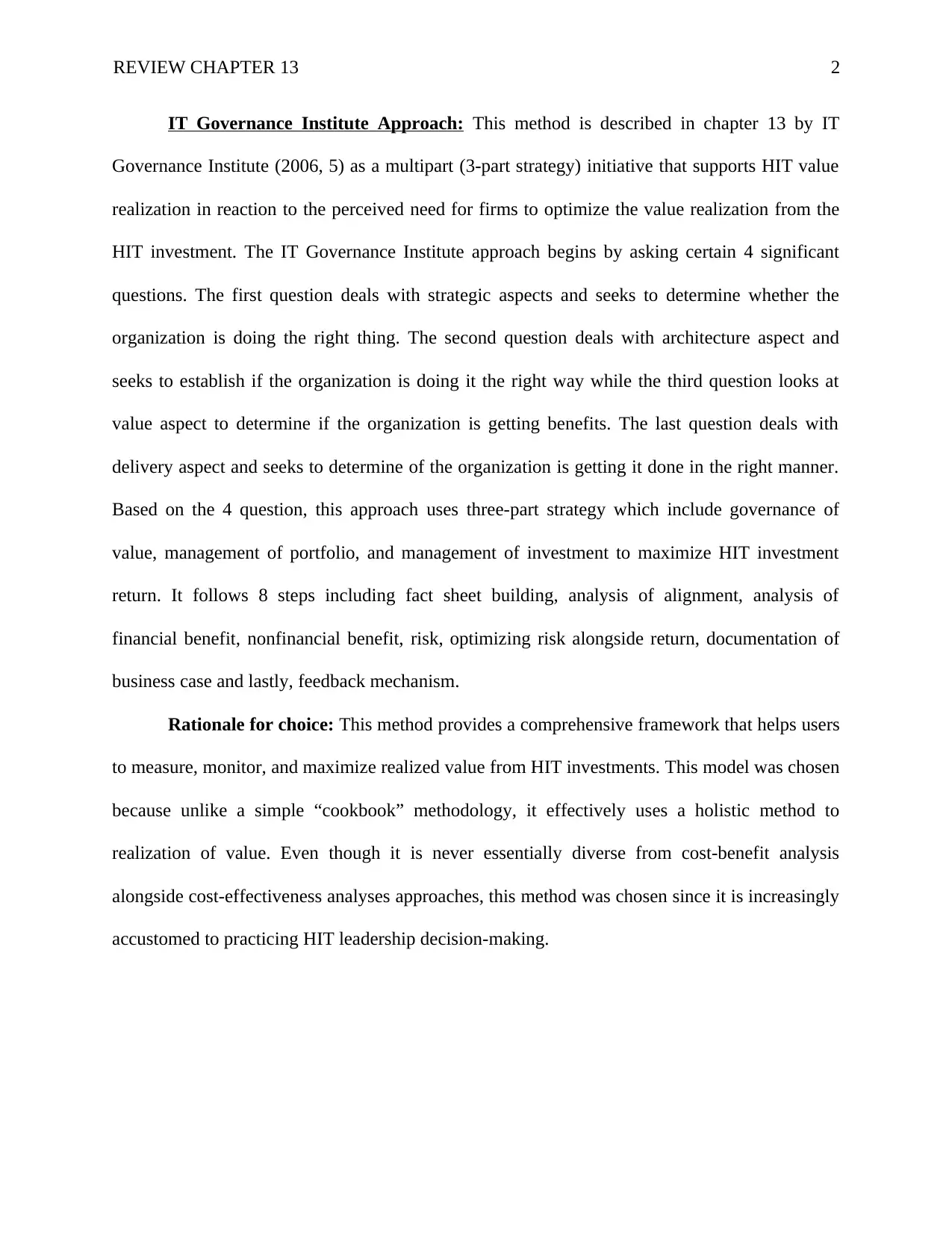Healthcare IT Governance: Review of Chapter 13 and HIS Selection
VerifiedAdded on 2022/09/06
|3
|318
|21
Homework Assignment
AI Summary
This assignment reviews Chapter 13, focusing on the IT Governance Institute's approach to healthcare IT (HIT) value realization and HIS (Health Information System) selection. The assignment highlights the IT Governance Institute's method, which employs a three-part strategy (governance of value, management of portfolio, and management of investment) to optimize HIT investment returns. The method begins with four key questions: Are we doing the right things? Are we doing it the right way? Are we getting benefits? Are we getting it done in the right manner? The approach involves eight steps, including fact sheet building, alignment analysis, financial and non-financial benefit analysis, risk assessment, optimization of risk alongside return, documentation of the business case, and a feedback mechanism. The rationale for choosing this model is its holistic approach, which provides a comprehensive framework for measuring, monitoring, and maximizing the realized value from HIT investments, unlike a simple “cookbook” methodology. The assignment emphasizes that the IT Governance Institute's method is a valuable tool for HIT leadership decision-making.
1 out of 3










![[object Object]](/_next/static/media/star-bottom.7253800d.svg)